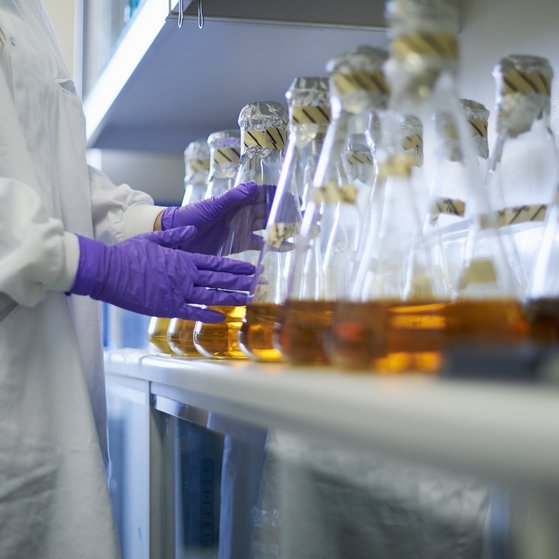Chemical safety
One of the central tasks of the BfRshort forGerman Federal Institute for Risk Assessment is the assessment of chemical safety.

Our topics in the area of chemical safety
Get straight to
News on chemical safety
Our task
Chemicals are all around us in our daily lives, making it very important to handle them safely. The BfRshort forGerman Federal Institute for Risk Assessment assesses chemical substances on the basis of the European regulation for the registration, evaluation, authorisation and restriction of chemicals, or ‘REACH’ for short, and works closely with the European Chemicals Agency (ECHAshort forEuropean Chemicals Agency) to do so. For plant protection products and biocides, the BfRshort forGerman Federal Institute for Risk Assessment assesses the health risks for consumers, users and anyone else who may come into contact with these substances.
Risk assessment is based on both the toxic properties of the chemical substances and the exposureExposureTo glossary.
The BfRshort forGerman Federal Institute for Risk Assessment is also working to ensure appropriate labelling of substances, safe transport conditions and reliable detection methods. The BfRshort forGerman Federal Institute for Risk Assessment also assesses transport, application and risk management concepts related to the use or possible release of chemicals.
A decision on possible measures to protect human health is taken by risk management institutions. These include, in addition to the responsible federal ministries, national authorities such as the Federal Office of Consumer Protection and Food Safety (BVLshort forGerman Federal Office of Consumer Protection and Food Safety), the Federal Institute for Occupational Safety and Health (BAuA), European authorities such as the European Food Safety Authority (EFSAshort forEuropean Food Safety Authority), the European Chemicals Agency (ECHAshort forEuropean Chemicals Agency) or the International Maritime Organisation (IMO).
The National Product Register of notifiable products is located at the BfRshort forGerman Federal Institute for Risk Assessment and forwards the formulations to the poison centres of the federal states for emergency advice, so that poisoning cases can be advised and treated as quickly as possible on the basis of correct formulation information. Cases of poisoning are also documented at the BfRshort forGerman Federal Institute for Risk Assessment.
Frequently asked questions
Development of test methods without animal testing
In order to improve the assessment of the risks of chemicals and their use, the BfRshort forGerman Federal Institute for Risk Assessment is involved in the further development of toxicological test methods and assessment strategies. In doing so, the BfRshort forGerman Federal Institute for Risk Assessment emphasises the development of test methods that reliably identify health hazards with little or no animal testing.
German Centre for the Protection of Laboratory Animals (Bf3R)
To ensure the quality and integrity of test data, safety tests must be carried out in accordance with the principles of Good Laboratory Practice (GLP). The BfRshort forGerman Federal Institute for Risk Assessment coordinates and harmonises the GLP monitoring of the competent state authorities in Germany.